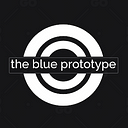Member-only story
Make TabLayout ViewPager by SwiftUI
TabLayout is the list of horizontal tabs. If you are know little bit about android then assuming that you heared it. Now we will build it in iOS by SwiftUI framework.
Recently Apple launched SwiftUI 2.0. There are lots of updates in this version. So we will use version 2.0 😊
Get Started
Let’s start by developing a demo project which contains scrollable list of tabs with respective pages.
In the below video, you can see that there is list of tabs views e.g. Tab 1, Tab 2 and so on.. with its respective pages. Every tab has own page. Page changed by every tab selection.
In this sample project, we’ll cover some basic knowledge about following key topics:
- TabView
- ScrollView
- ScrollViewReader
- Some more view’s modifiers
Let’s jump into the code
Here, I am attaching screenshots of sourcecode for a better view in less space. But don’t worry, below of this post, i’ll add git repository link where you can checkout full source code.
